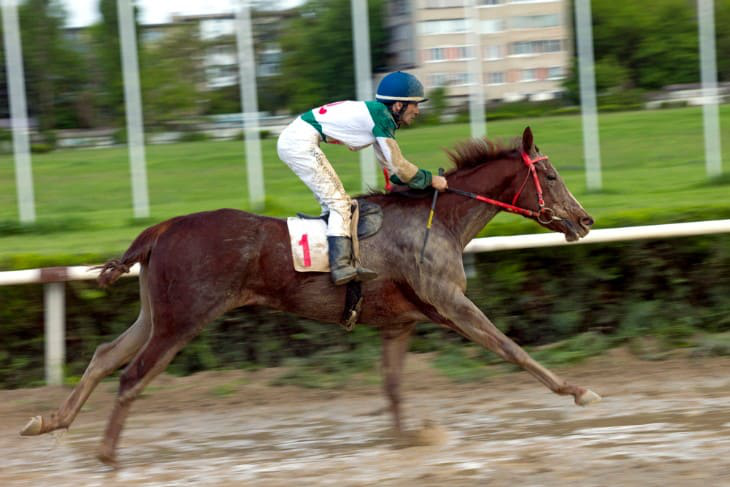Horse racing, an esteemed pastime tradition in the British society, has consistently captivated enthusiasts with its mix of grace, pace, and unpredictability. While many are familiar with traditional betting, there exists a lesser-known yet equally exciting avenue: lay betting. In this detailed guide, we'll be providing you with the insights to master this fascinating dimension of horse racing.
Lay Betting and Its Significance in Horse Racing
Imagine this: You're at the racetrack, hearing the horses run and the audience's excitement, considering placing a bet on a horse to win. Now, think of an alternative - betting on a horse not to win. This introduces lay betting, a practice that's become popular due to its distinct approach to typical bets.
In simple terms, lay betting involves placing bets on horses not to win, effectively assuming the role of the bookmaker. This innovative approach opens up new opportunities for bettors to profit from a horse's performance, regardless of whether it claims victory or not. The significance of lay betting lies in its ability to diversify your strategies and potentially generate profits from multiple outcomes.

Understanding the Basics of Horse Racing: A Primer for Beginners
Before we delve deeper into lay betting, it's crucial to establish a solid foundation in the world of horse racing. Whether you're a newcomer or a casual racegoer, grasping the essentials of the sport will enhance your overall understanding and decision-making prowess.
At its core, horse racing involves a variety of race types, distances, and track conditions, all of which contribute to the diverse nature of the sport. Familiarize yourself with the different classes of races, such as Flat racing and National Hunt, and gain insights into the factors that influence a horse's performance, including form, jockey skills, trainer history, and prevailing weather conditions.
Understanding the key terms used in horse racing, from 'furlong' to 'handicap,' will enable you to engage more confidently with fellow enthusiasts and navigate the vast amount of information available. By immersing yourself in the basics, you'll be well-prepared to set forth on your lay betting adventure with a solid understanding of the intricate world of horse racing.
Demystifying Lay Betting: How It Differs from Traditional Betting
Now that we've laid the groundwork with an understanding of horse racing basics, let's unravel the unique concept of lay betting. While traditional betting involves backing a horse to win, lay betting flips the script by allowing you to bet against a horse's victory. In essence, you're assuming the role of the bookmaker, offering odds to other punters who believe the horse will win.
This reversal of roles opens up a world of strategic possibilities. Imagine you're eyeing a race where one particular horse is heavily favored by the bookmakers. With lay betting, you can opt to place a lay bet against that horse, effectively wagering that it won't come in first. If your prediction holds true and the horse doesn't win, you secure a profit. However, if the horse does manage to claim victory, you would need to pay out to the backers of your lay bet.
Identifying Opportunities: Factors for Selecting Horses to Lay
Effective lay betting relyse on the ability to identify horses that are more likely to lose than the odds suggest. This requires a good eye for detail and a thoughtful analysis of various factors that can influence a horse's performance on race day.
Form analysis is a key starting point. Assess a horse's recent race history to gauge its consistency and potential for success. Look for patterns of underperformance or signs of improvement that might indicate a horse's current condition. Trainer and jockey statistics also play a significant role. A skilled jockey paired with a reputable trainer can significantly impact a horse's chances.
Track conditions should not be overlooked. Some horses excel on certain surfaces, while others may struggle to maintain their pace. Similarly, the distance of the race can be a deciding factor. A horse that typically excels in shorter sprints might face challenges in longer distances, and vice versa.
The Art of Assessing Odds and Probabilities in Lay Betting
When beginning with lay betting, it's crucial to understand the evaluation of odds and probabilities. Unlike traditional betting, where odds indicate a horse's likelihood of winning, lay betting involves understanding the inverse: the probability of a horse losing. This shift in perspective is fundamental to making informed decisions.
Start by familiarising yourself with odds formats commonly used in horse racing, such as fractional, decimal, and moneyline. These formats express the potential payout relative to your stake, and comprehending them will aid in calculating potential profits and liabilities.
Probabilities, on the other hand, represent the likelihood of a specific outcome occurring. As a lay bettor, you'll need to estimate the probability of a horse not winning. This estimation draws on a combination of your analysis, market trends, and the wisdom of the betting community. Developing a sound understanding of how odds and probabilities intertwine will help you pinpoint valuable betting opportunities and make prudent choices.
Managing Risks and Setting Realistic Expectations in Lay Betting
Engaging in lay betting demands a prudent approach to risk management. While it offers unique prospects for profit, it's vital to acknowledge that losses are an inherent part of the process. Disciplined risk management can mitigate potential pitfalls and safeguard your betting bankroll.
One key principle is to set a dedicated betting bank specifically for lay betting. This separate fund serves as a buffer, ensuring that losses in lay bets won't adversely affect your overall financial stability. Additionally, avoid placing high-stakes bets that could lead to significant losses. Opt for a consistent and measured betting strategy, aiming to keep your liabilities within a manageable range.
Realistic expectations are equally crucial. While lay betting can yield profits, it's essential to recognise that consistent success requires time, effort, and ongoing learning. Setting achievable goals and appreciating incremental gains will help you maintain a balanced perspective and stay motivated.

Navigating Betting Exchanges: Platforms for Lay Betting Enthusiasts
In the digital age, lay betting has been revolutionised by the emergence of betting exchanges. These online platforms provide a dynamic marketplace where bettors can interact directly with each other, offering and accepting bets on a wide range of sporting events, including horse racing.
One of the most prominent advantages of betting exchanges is the ability to both back and lay selections. This flexibility empowers you to act as either the punter or the bookmaker, enhancing your strategic options. Moreover, betting exchanges often offer more competitive odds compared to traditional bookmakers, allowing you to secure better value for your bets.
It's essential to acquaint yourself with popular betting exchange platforms such as Betfair, Betdaq, and Smarkets. These platforms provide user-friendly interfaces, live streaming of races, and a plethora of data to aid your decision-making process. Familiarising yourself with the mechanics of placing lay bets on these exchanges is crucial to fully leverage their benefits and elevate your lay betting experience.
Strategies for Success: Proven Approaches to Lay Betting in Horse Racing
Strategies lie at the heart of successful lay betting, offering a structured framework to navigate the complexities of horse racing. One widely used strategy is the "lay the favourite" approach. This involves targeting horses that are strongly favoured by the bookmakers to win but have potential vulnerabilities, creating opportunities for lay bets.
Another tactic is the "lay the field" strategy, which involves laying several horses in a race, betting that none of them will win. This approach relies on statistical probability and can be particularly effective in races with large fields and unpredictable outcomes.
"Back-to-lay" is a more advanced strategy, where you initially back a horse to win at longer odds and then lay it off at shorter odds before the race begins. This technique capitalises on shifting odds and market fluctuations.
Regardless of the strategy you choose, thorough research and disciplined execution are paramount. Regularly updating your knowledge of horse form, jockey-trainer dynamics, and market trends will sharpen your ability to identify prime lay betting opportunities.
Beyond the Basics: Advanced Tips and Insights for Evolving Lay Betting Skills
As you evolve as a lay bettor, delving into advanced techniques can elevate your success even further. One such approach is trading on betting exchanges. This involves taking advantage of fluctuating odds before and during a race to secure profits regardless of the race outcome. Effective trading requires swift decision-making and a deep understanding of market dynamics.
Consider utilising software and tools designed for lay betting. These tools can assist in tracking odds movements, identifying trends, and executing bets with precision. While not essential, they can provide an edge for those willing to embrace technology.
Remember, consistency is key. Stick to your chosen strategies and refine them over time based on your experiences. Avoid jumping from one approach to another without giving each ample time to showcase its potential.
Finally, embrace the camaraderie of the lay betting community. Engage in discussions, seek advice, and share your experiences. The insights and perspectives of fellow bettors can broaden your horizons and offer fresh insights.
Conclusion
With these advanced tips and insights, you stand ready for a journey of continuous improvement and refinement in your lay betting advantures. By merging discipline, knowledge, and innovation, you'll go in a path towards consistent success in the dynamic world of horse racing lay betting.








